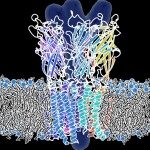Lien vers Pubmed [PMID] – 8274143
Lien vers HAL – Cliquez ici
Lien DOI – 10.1002/bies.950151007
Bioessays. 1993 Oct;15(10):675-87. Review
The combined use of molecular and structural biology techniques has proved very efficient in elucidating structure-function relationships in aminoacyl-tRNA synthetases. Our present understanding of this family of enzymes is based on two main unifying principles: (i) division into two different classes, corresponding to two different modes of ATP binding and attachment of the activated amino acid to the last nucleotide of tRNA (either 2’OH or 3’OH of the ribose) by two different catalytic mechanisms and two structural domains with completely different folding, and (ii) the modular organization into separate and additional domains that we are just beginning to understand. Sequence analysis complements very nicely existing structural, biochemical and genetic results and makes them more general, leading to verifiable predictions.

